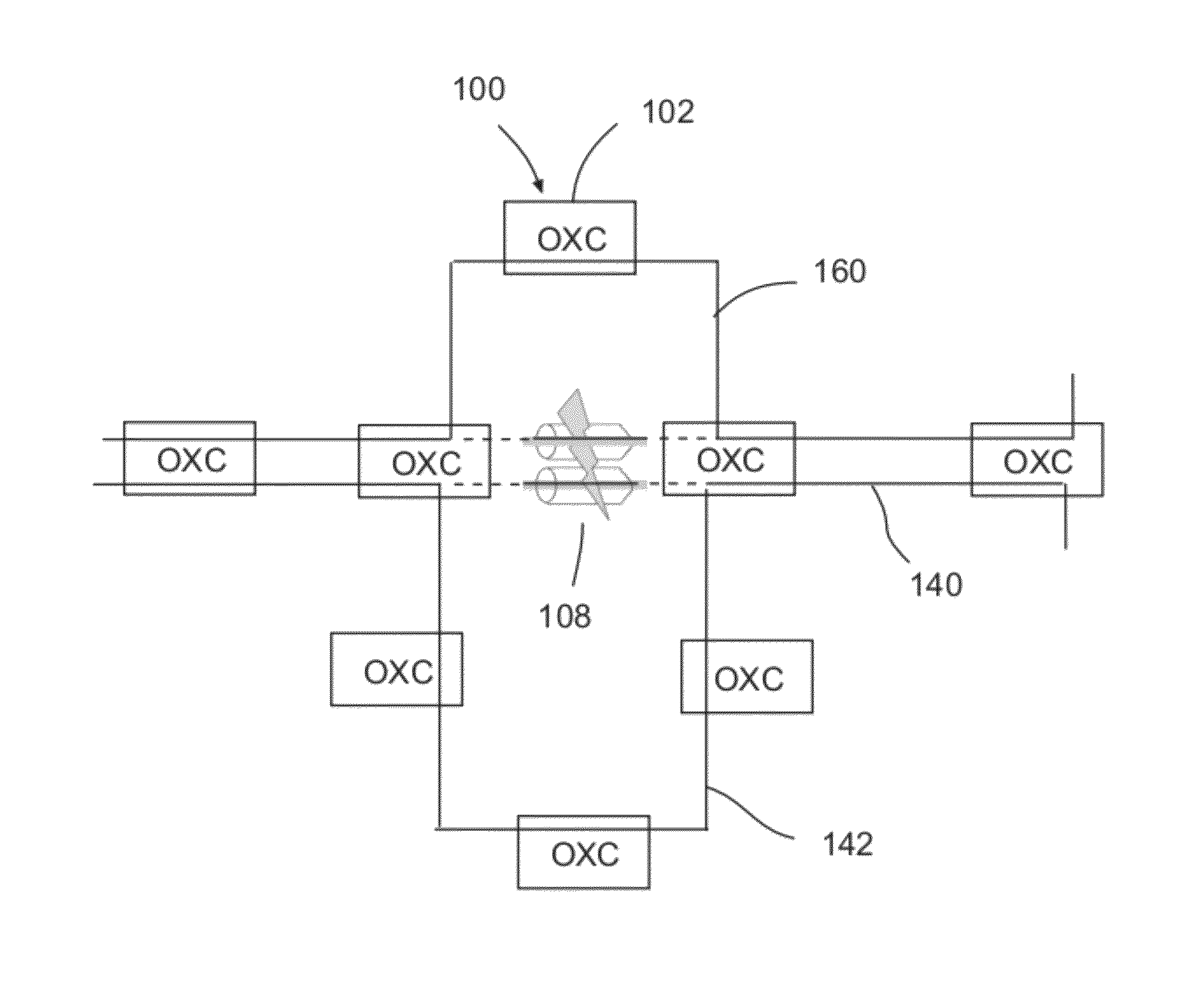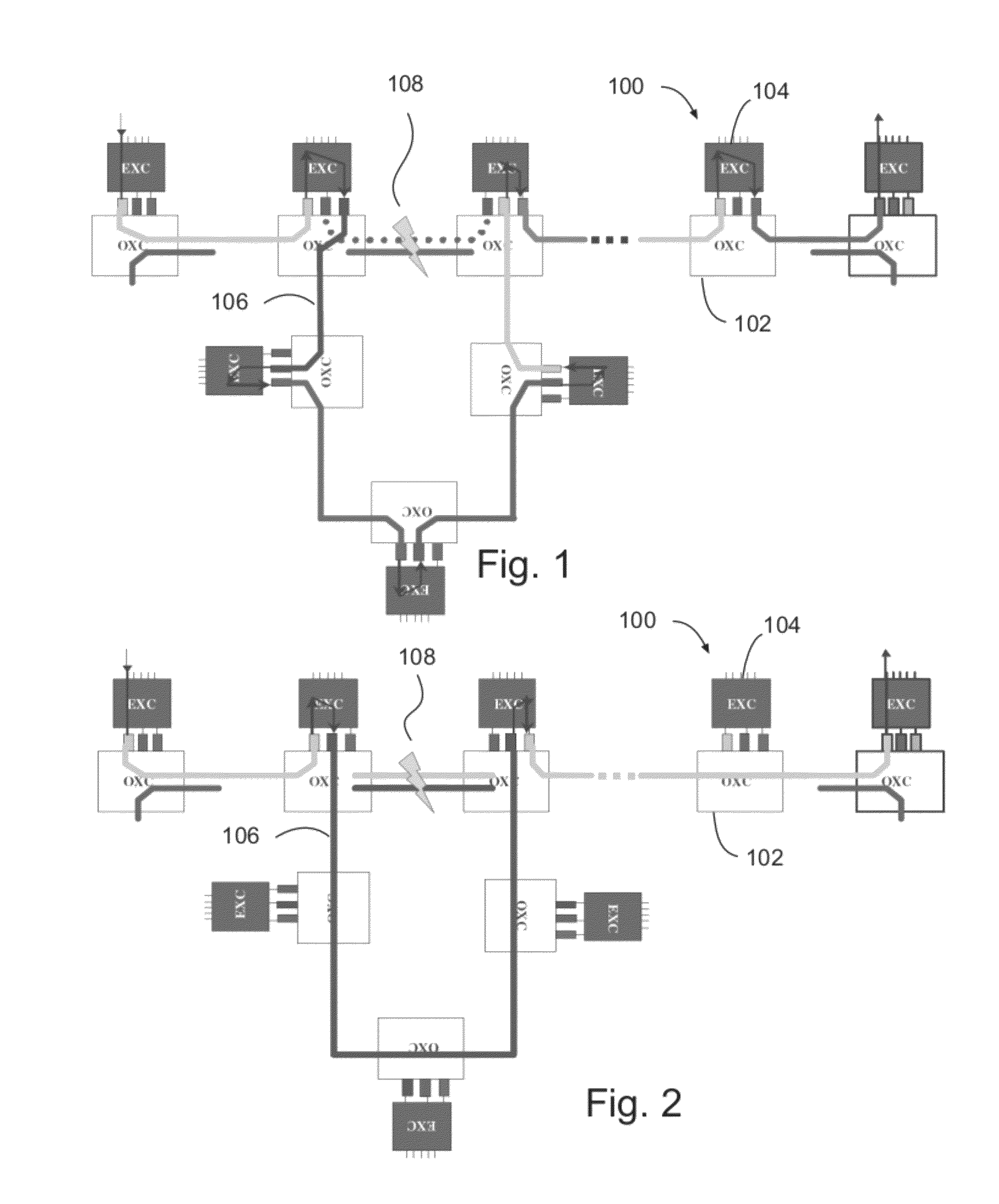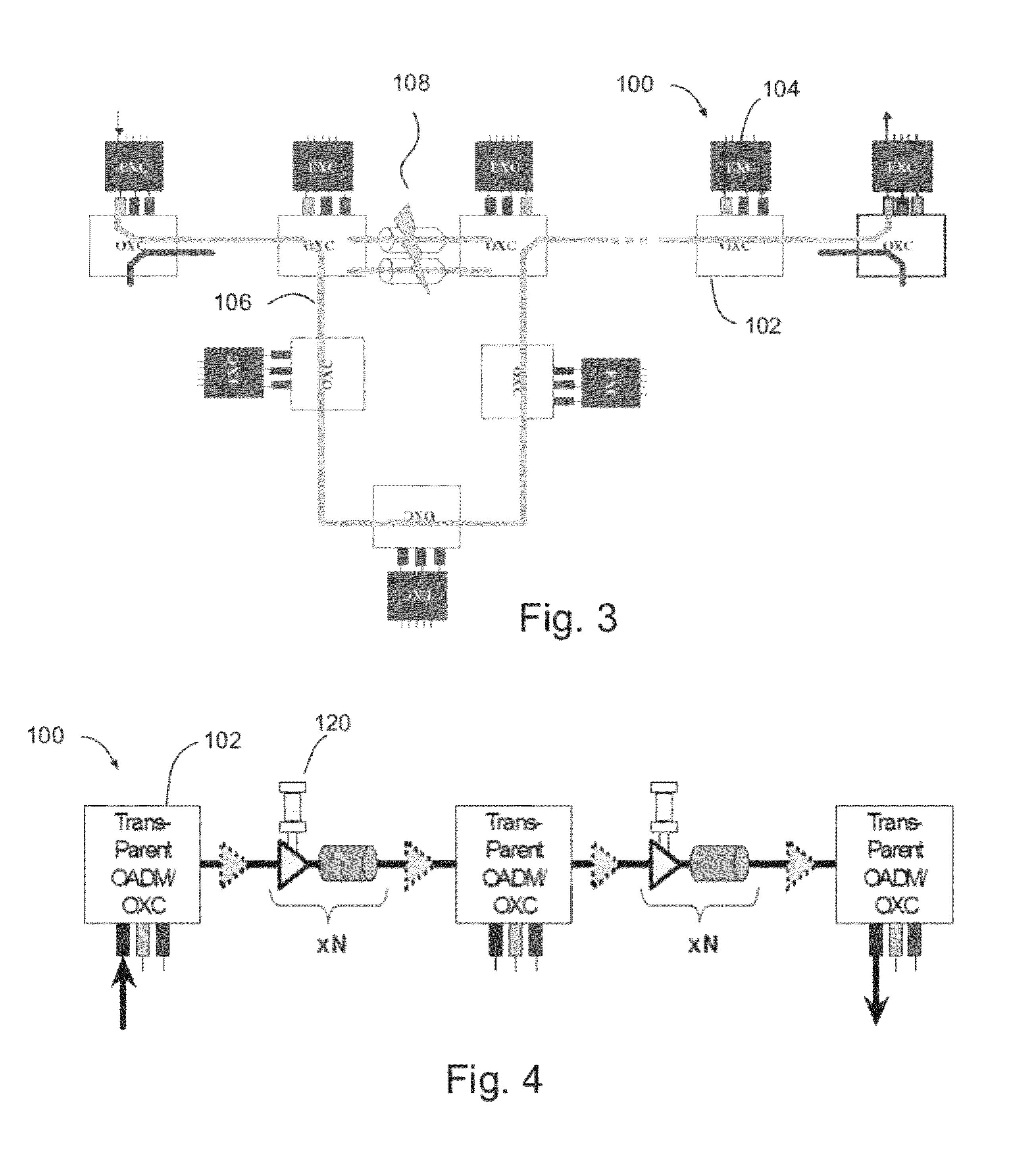Whole fiber switched p-cycles
a fiber optic network and cycle technology, applied in the field of whole fiber optic switching, can solve the problems of bringing more complexity and computational problems in the conventional p-cycle network design problem, affecting the performance of the network,
- Summary
- Abstract
- Description
- Claims
- Application Information
AI Technical Summary
Problems solved by technology
Method used
Image
Examples
Embodiment Construction
[0033]FIGS. 1-3 respectively show opaque, hybrid and fully transparent p-cycle designs. For each configuration type, the first lines in FIGS. 1-3 illustrate pre-failure state paths; while the bottom lines plus the second and third nodes in the first lines, and their connecting links comprise p-cycles. In each of FIGS. 1-3, nodes 100 comprise optical cross-connect switches 102 and electrical cross-connect switches 104. Links 106 between nodes may correspond to channels for particular wavelengths in the opaque or hybrid cases or entire fibers in the transparent case. Span failure 108 is typically assumed to affect all channels and fibers of the span.
[0034]The opaque configuration case (FIG. 1) implies wavelength discontinuities and thus, o-e-o conversion at every node across working paths and along p-cycles. This means every working path and p-cycle leaves and re-enters the optical domain to access the next span on which it probably rides onto a different wavelength.
[0035]In the hybri...
PUM
 Login to View More
Login to View More Abstract
Description
Claims
Application Information
 Login to View More
Login to View More - R&D
- Intellectual Property
- Life Sciences
- Materials
- Tech Scout
- Unparalleled Data Quality
- Higher Quality Content
- 60% Fewer Hallucinations
Browse by: Latest US Patents, China's latest patents, Technical Efficacy Thesaurus, Application Domain, Technology Topic, Popular Technical Reports.
© 2025 PatSnap. All rights reserved.Legal|Privacy policy|Modern Slavery Act Transparency Statement|Sitemap|About US| Contact US: help@patsnap.com



